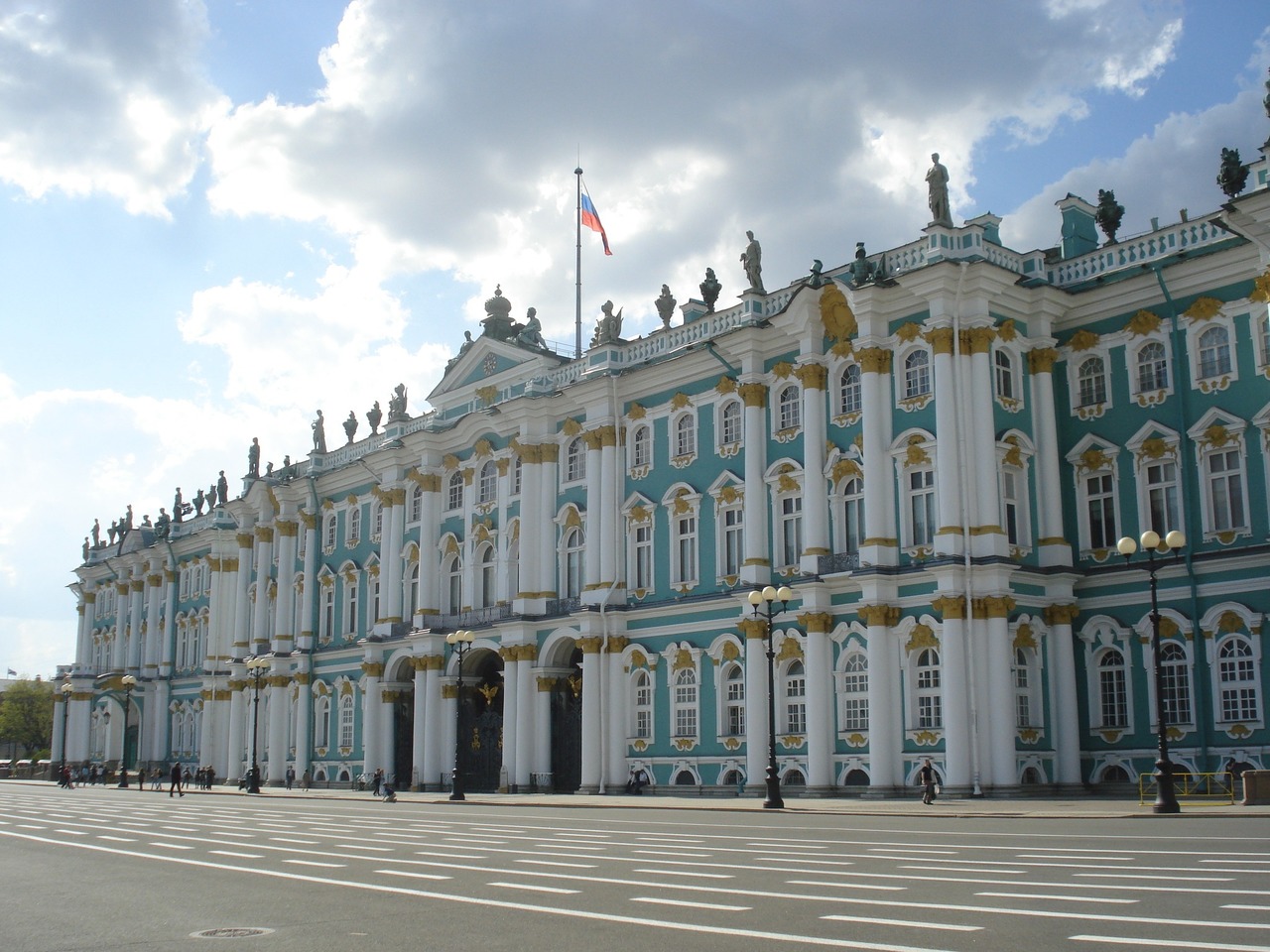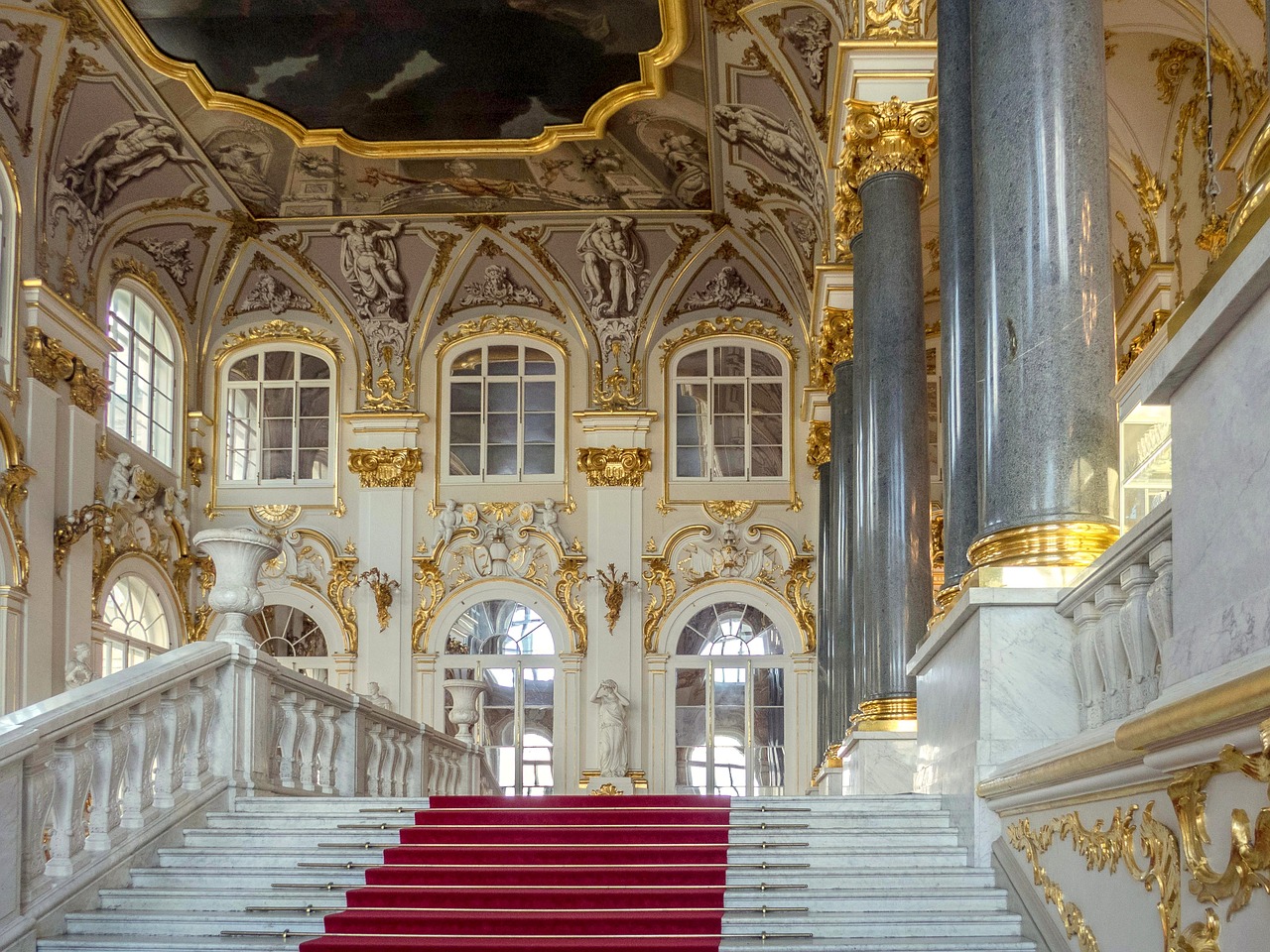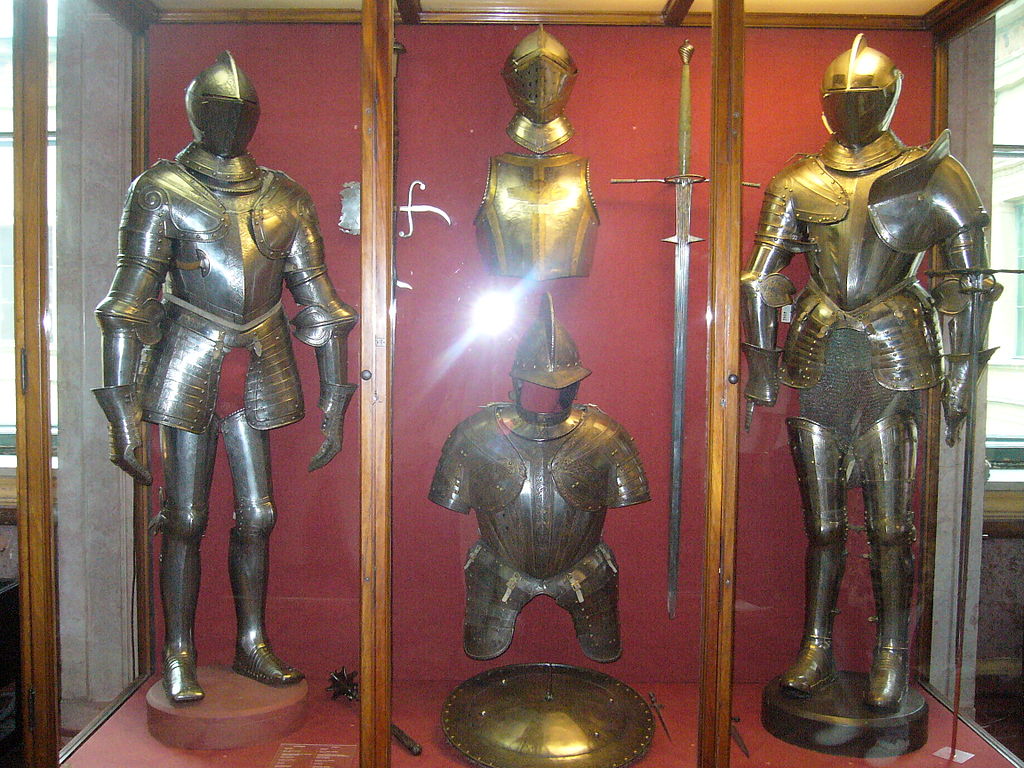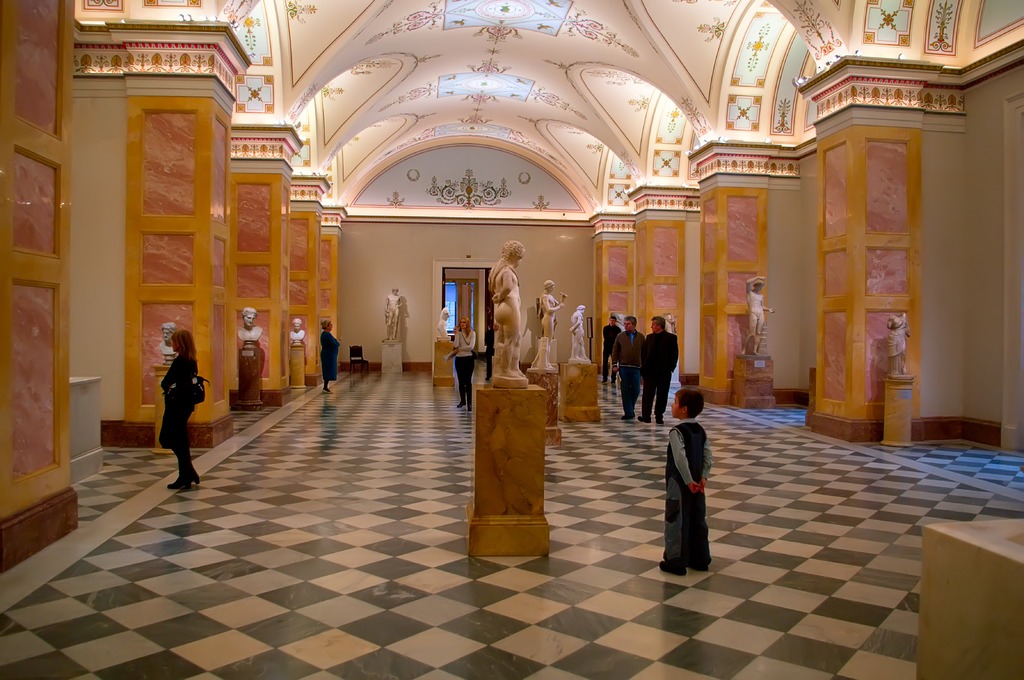Hermitage Museum in Saint-Petersburg
The State Hermitage Museum is the biggest in Russia and one of the world’s largest art and cultural-historical museums. It’s located in St.-Petersburg, the “northern capital” of Russia.

Telling the whole history of the Hermitage is almost like telling the history of Russia, so important this museum is in the life of the country. But we will try to meet the short format of our site and tell you all the most interesting things about this museum in one article.
Brief history of Hermitage
In 1754, a construction of a new residence of Empress Elizabeth – the Winter Palace – has began. The project was proposed by the leading Russian Baroque architect of Italian origin Bartolomeo Francesco Rastrelli. The construction of the palace took 7 years. During that time, Empress Elizabeth was replaced by Peter III, and after him Catherine II ascended the throne.

By order of Catherine II, the Small and Large Hermitage buildings, as well as the Hermitage Theater were built. The ensemble of buildings that now houses the State Hermitage Museum was completed. Catherine II purchased the collections of artworks that marked the beginning of the future museum collection.
Although until the mid-19th century, only nobles could enjoy the Hermitage artworks. Only after 1852 the museum was opened to the public at large in the New Hermitage building specially built for this purpose under Nicholas I.

During the First World War, the Winter Palace ceased to be the official imperial residence while remaining a place for receptions and ceremonies. The war of 1914 interrupted the normal life of the museum. In August, part of the exhibits was exported to Moscow. In mid-October 1915, in the empty halls of the Winter Palace was set out a hospital which existed until November 1917.
After the February Revolution, the museum continued to work but temporarily refrained from admitting the public.
In early August 1917, the Provisional Government announced the nationalization of the royal palaces and formed an art-historical commission to accept the exhibits of the Winter Palace. In September, another part of the Hermitage collection was evacuated to Moscow.
Since July 1917, the apartments of former tsar Nicholas II and his wife in the Winter Palace were occupied by the Provisional Government.
On the night of October 25 (November 7) in Petrograd, there was a change of power again: the Russian Social-Democratic Labor Party (Bolsheviks), headed by V.I. Ulyanov (Lenin) took control of the main objects of the city leading to the arrest of the Provisional Government. All powers were transferred to the Bolsheviks.

The Hermitage collections was not affected by these events, since at that time the museum was isolated from the palace. Immediately after the Winter Palace was taken, an armed detachment was sent to the Hermitage for protection.
In the pre-war years, the Hermitage struggled between the strict requirements of the authorities to open the storage rooms and sell a part of the exhibits to the west, and the sincere desire of the museum staff to preserve the most valuable items. Many famous works of art were sold abroad during that time.
Thanks to the efforts of the Hermitage staff, most of the collection was preserved. But the fee for this was very high. More than fifty museum staff were repressed over those years.
When World War II came to Russia, the collection was evacuated to the Urals. But the buildings of the museum were significantly damaged during the shelling.
After the end of the war, work in the Hermitage began with a vengeance. The museum had to accept trophy artworks in large quantities imported from Germany. As you might know, Hitler was going to open a museum, gathering all the best that he managed to capture in Europe. At the time of the capture of Berlin by Soviet troops, the museum was preparing for the opening. Quite by chance, his future director was captured, who told about the whereabouts of the storage rooms resulting in many artworks taken from Germany to Russia.

Hermitage today
Today, the State Hermitage Museum has a collection of about three million works of art and monuments of world culture. It includes painting, sculpture and objects of applied art, archaeological finds and numismatic material. With the Hermitage collection you can study the development of world art from the Stone Age to the end of the 20th century.
Among the famous artworks presented in the Hermitage are: Benois Madonna, Judith (Giorgione), The Return of the Prodigal Son (Rembrandt), Conestabile Madonna, and many others. The museum has a rich collection of paintings by Rubens, Rembrandt, Van Dyck, Poussin, Titian, Veronese, Claude Lorrain and others.
The main exposition occupies five buildings located along the Neva embankment:
– Winter Palace
– Small Hermitage
– Great Hermitage
– Hermitage Theater
– New Hermitage
So, if you are an art lover and would like to visit the Hermitage, plan a few days on it. Or you can make a virtual trip over the Hermitage on the its website.
Here are a few tours that might interest you if you plan to visit the Hermitage:






